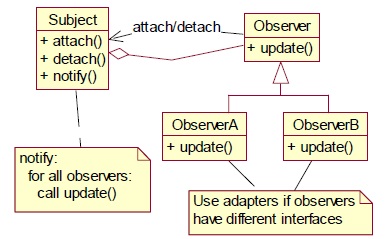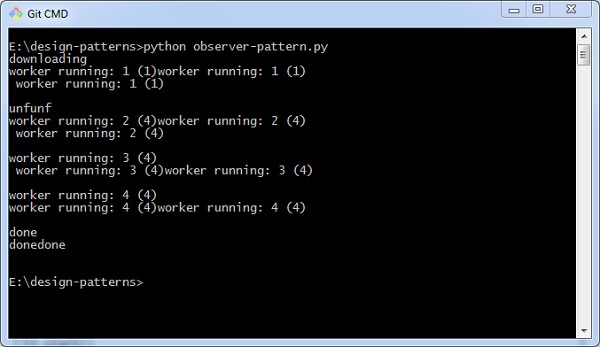Python Design Patterns – Observer
In this pattern, objects are represented as observers that wait for an event to trigger. An observer attaches to the subject once the specified event occurs. As the event occurs, the subject tells the observers that it has occurred.
The following UML diagram represents the observer pattern −

How to implement the observer pattern?
Let us now see how to implement the observer pattern.
import threading import time import pdb class Downloader(threading.Thread): def run(self): print 'downloading' for i in range(1,5): self.i = i time.sleep(2) print 'unfunf' return 'hello world' class Worker(threading.Thread): def run(self): for i in range(1,5): print 'worker running: %i (%i)' % (i, t.i) time.sleep(1) t.join() print 'done' t = Downloader() t.start() time.sleep(1) t1 = Worker() t1.start() t2 = Worker() t2.start() t3 = Worker() t3.start()
Output
The above program generates the following output −

Explanation
The above code explains the procedure of downloading a particular result. As per the observer pattern logic, every object is treated as observer. It prints the output when event is triggered.
